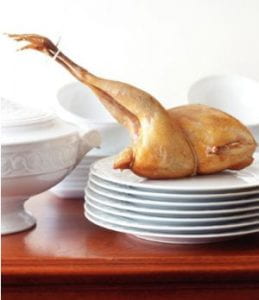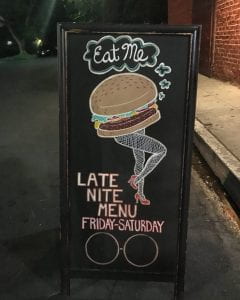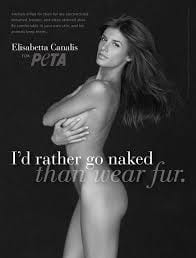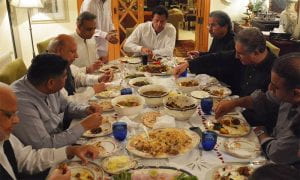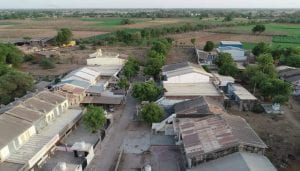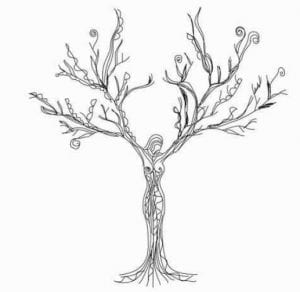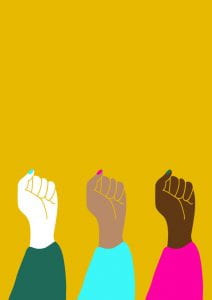I personally apologize for mentioning this tradition and it is not to demean any religion or to criticize it. This reference is just for the blog purposes.
https://www.youtube.com/watch?v=JlBWWDPekSo
Uploaded video shows the cruel tradition performed in Hinduism name “Sati”. Sati is a ritual in which a widow is burned alive after her husband dies. As you can see in the video, the widow is thrown in the pier and as this happens drums and all sort of music starts to play to avoid the sound of her screams. They believe that it’s a way for women to enter heaven. This tradition according to me supports the idea of violence against women in Hinduism. Although practicing Sati was abolish in December 4th, 1829, it still did exist. Bina Agarwal in her article mentions Shiva’s finding about the violence against women and nature, “violence against women and against nature are linked not just ideologically but also materially.” The above tradition was based on the violence based on the beliefs hold by Hindu culture. Hobgood-Oster and Warren both talks about oppression with women and culture but that is restricted-for most of the parts- with the concept of dualism, hierarchies and by those in power and not violence.
Apart from the violence especially in the rural areas there are still many examples where women are being dominated by men in different ways. In third world countries like India and Pakistan, most of the women are not allowed to study at all (rural areas) or till college (urban areas). The only purpose of women in such areas are to get married and take care of their family. These norms or cultural values as you can say are not due to religion but solely those in power. In Islamic book, Quran, the very first Quranic verse revealed, “Read in the name of your Lord who created, created man from a clinging form. Read! Your Lord is the Most Generous, who taught by means of the pen; taught man what he did not know. (96:1-5) (Onaid,2014)”. To emphasize, the word man is not use to refer to men but humanity.
Prophet Muhammad (P.B.U.H), prophet of Muslims said, “He who has a slave-girl and teaches her good manners and improves her education and then manumits and marries her, will get a double reward; and any slave who observes God’s right and his master’s right will get a double reward (Onaid,2014).” This is evident that religion does not oppress women but it is cultural norms that do so.
According to Agarwal, her understanding and perception about ecofeminism is different than what Hobgood and Warren had. From what I perceived, Agarwal sees ecofeminism as two divergent theory which she called “feminist environmentalism”. However, according to Warren, the existence of ecofeminism for feminism, environmental philosophy and philosophy is to consider each other issues significant . Where on the other hand Hobgood states the different aspect of looking at ecofeminism that is, ecofeminism argues that all sorts of oppression are connected and should be looked completely.
Agarwal unlike other ecofeminists does not only connects women and nature but she also idealize people and nature. By people she means both women and men. She highlighted some common concepts found in ecofeminism by different ecofeminists. She talks about how there are things that is still needed to be discussed in ecofeminism which particularly in western society is the idea of liberal, radical and socialist feminism. Thus she believes that ecofeminism has not been completely shaped but rather is developing. Similarly, Warren in her article also questioned about these feminism theory as there isn’t any fixed answer to it. Such as liberal feminism in western society which believes that society give full freedom to individual to pursue their own interest. Radical feminism argues that “women are closer to nature than men” (Warren, 2014).
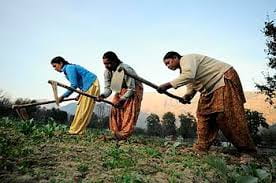
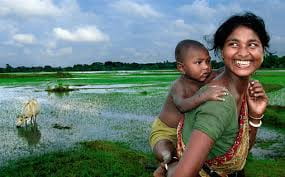
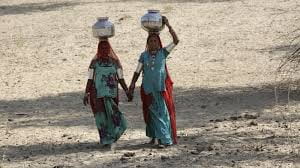
As you can see from the picture above, women in rural areas in India do the labor work together with taking care of a child. The third picture tells us how it is women’s responsibility to walk miles to get water for their families. This is how women and nature are related. Both have nurturing abilities that are regardless being dominated by our patriarchal society. Destroying nature affects these women living in rural areas.
People in rural areas depend on nearby trees and other related sources to gather wood, food, fodder, bamboo etc for survival. Destroying the environmental sources leads to adverse affects such as, with fewer trees comes soil erosion making land less fertile for cultivation, fewer trees less rain. In agriculture, rain is very important. Production of crops required water which is obtained from rain. So, less rain has affects on crop production. Environmental degradation and depletion of natural resources affect people differently. Obviously the richer has all the benefits while poor suffers the most (Agarwal).
I like Agarwal’s perspective more appealing because she not just talked about the general notion of how nature and women are being oppressed by men and how they are connected in ways which they are being dominated but also she has different perspective of how women and nature are also affected by environmental degradation. Also unlike Hobgood and Warren she not only just talked about Indian cultural but also compared between both Indian and western culture at some point.
I am a person who believes that both women and men should have equal opportunities and should get equal rights. According to me equality is not just about getting equal rights in job, politically or any other position but equality should be in its totality. I don’t exactly blame men for every kind of oppression with women and nature. Somethings are already there. For example nature is to benefit living, similarly animals are for human consumption. Now the word human includes both men and women. Benefits from nature and animals is not only obtained by men but also women. Women are also the part in destroying nature. Not ignoring the fact that both are being dominated by power of men but there is some dominance of women over nature too, or probably we can say that women does have some part in nature’s destruction. But as Agarwal in her article states that there are so many organizations that campaign for environmental degradation, they not only have women but men too are part of such organizations protesting against other men. So I ask you, does all men are to be blamed or are men entirely are to be blamed for such patriarchal male dominant society?
References
Brendan, and Brendan. “Warren’s Introduction to EcoFeminism.” There It Is Org, 21 Jan. 2014, thereitis.org/warrens-introduction-to-ecofeminism/.
Ecofeminism: Historic and International Developments. users.clas.ufl.edu/bron/pdf–christianity/Hobgood-Oster–Ecofeminism-International Evolution.pdf.
University of Massachusetts Dartmouth. UMassD Logon – UMass Dartmouth, www-jstor-org.libproxy.umassd.edu/stable/3178217?Search=yes&resultItemClick=true&searchText=Agarwal&searchUri=/action/doBasicSearch?Query=Bina+Agarwal&acc=on&wc=on&fc=off&seq=35#page_thumbnails_tab_contents.
“Role of Indian Women in Agriculture.” Agropedia, agropedia.iitk.ac.in/content/role-indian-women-agriculture.
Ciat. “Himachal Pradesh 68.” Flickr, Yahoo!, 15 Nov. 2011, www.flickr.com/photos/ciat/6348260166/.
Tech@whyislam.org. “The Importance of Girls’ Education in Islam.” WHY, 1 Dec. 2017, www.whyislam.org/social-ties-2/the-importance-of-girls-education-in-islam/.
YouTube, YouTube, www.youtube.com/watch?v=JlBWWDPekSo.



